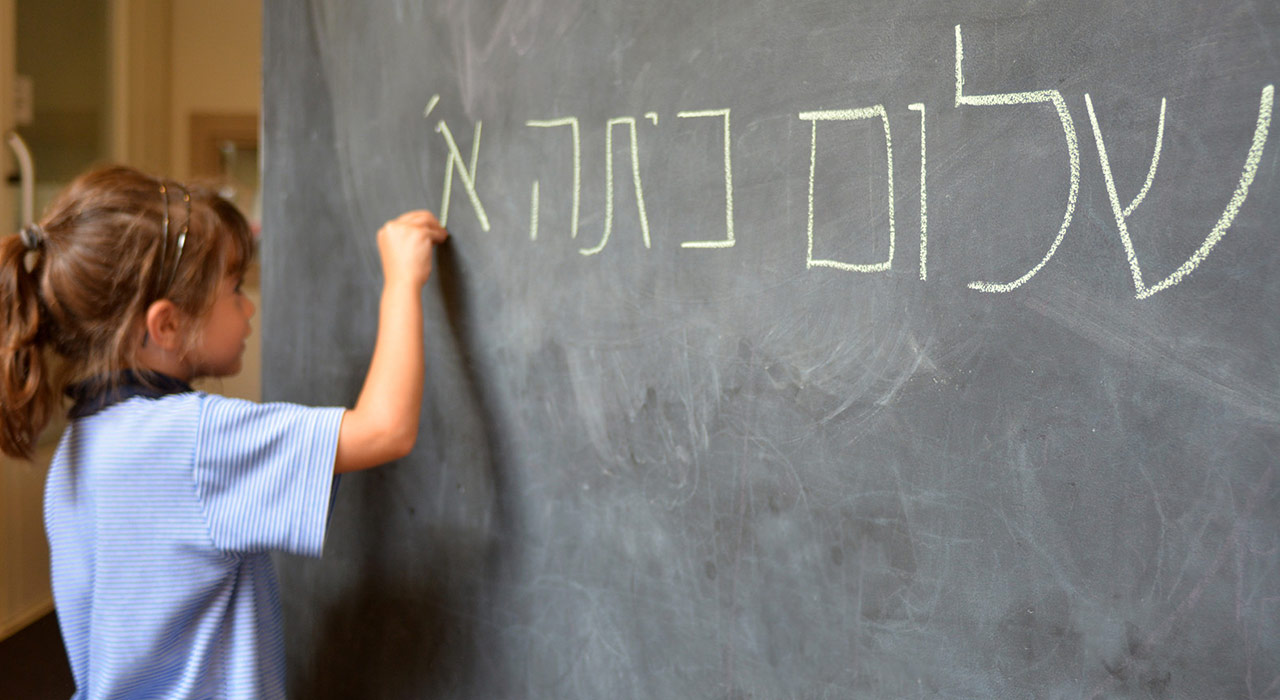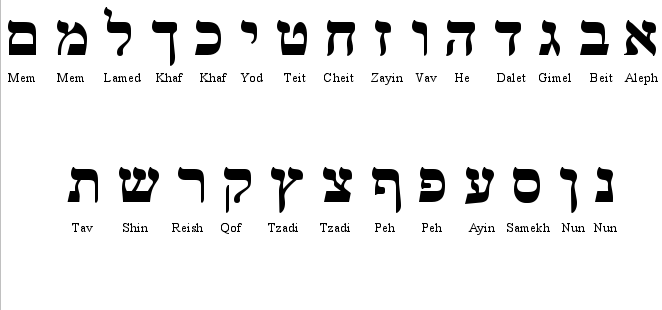Hebrew for Beginners: 10 Reasons Hebrew is Easy
“Oh my god! Come here, look at this! Hurry, you have to take a picture of it!”
My mom yelled at me to catch up. She pointed up at the Tel Aviv street sign. Lucky for her, street signs in Israel have three languages on them: English, Hebrew and Arabic. In English, it read, “Yeremyahu street.”
Yermyahu is my Hebrew name. My mom gave it to me, so of course she was proud to see it on a street sign in Israel and wanted me to take a picture of it. It wasn’t urgent at all, but you know how moms can get…
It was our fifth day in Israel. My mother, brother, sister and I were having a blast: enjoying pita and hummus, exploring cities like Haifa and Jerusalem, and enjoying quality family time together.

Meanwhile, my Hebrew was slowly coming back to me. I took three semesters of it in university from 2009-2012. It had been over two years since I’d actively used it, but by day five, I was finally conversational again after a little immersion . However, the first few days felt like I was starting from scratch.
Luckily, I realised quickly that Hebrew can be relatively easy to learn – even for beginners. This is the “Hebrew for beginners” list I wish I had when I was getting started. Enjoy!
1. The Hebrew Alphabet, Aleph Bet, isn’t so Difficult
Almost none of the Hebrew alphabet looks like the Roman alphabet, and even when it does, it carries a different sound. So beware of the following “false friends.” The koof (ק) looks like a P, even though it makes the “K” sound. The shin (ש) looks like a “W” but it makes the “S” sound. Samech (ס) looks like an “O” but makes the “S” sound.
And the cursive mem (מ) looks like an N, but it makes the “M” sounds. The cursive shin (ש) looks like an E. Don’t be fooled!
Wait…WHAT!? Cursive!?!? Ah just in time for #2…
2. Hebrew Uses Cursive
Writing in Hebrew cursive isn’t like writing in English cursive. I learned English cursive in grade school and never use it unless I am reading a letter from my grandmother or signing a check (Let’s be honest: this barely happens. Not only because I’m broke but because I work online).
Most native Hebrew speakers actually write in Hebrew cursive, so it’s worth learning it if you plan to learn to read and write in the language, which you should because you are an overachiever!
3. Hebrew Reads from Right to Left
Most languages read left to write, so reading Hebrew can be tricky to grasp at first. But once you get the hold of it, it comes naturally! It’s actually great brain exercise as well.
4. There’s no “to be” Verb in Hebrew
Similar to a lot of South East Asian languages, Hebrew has no word for “is” or “are”. Instead of “I am tired,” you say, “I tired” (אני עייף). Or, you can even shorten it to, “tired?” (עייף) to ask a question (i.e. “Are you tired?”). This actually makes it much easier for beginners because there are fewer words to remember.
5. No One Uses “Shmi” (שמי)
Several teachers taught me to introduce myself like this. “Shmi Jeremy.” But, in Israel, no one says that. They say, “Ani (אני) Jeremy,” which translates to, “I am Jeremy.”
Shmi (שמי) is the more formal way of introducing yourself, more like “I am called.” While this makes sense, it’s used mostly by grandmothers in Israel, so you may get a few funny looks if you introduce yourself this way to native Hebrew speakers.
6. Beginner Hebrew Includes Vowels… But You Don’t Need Them
The vowels in Hebrew are dots and dashes above and below the letters to indicate the sound the consonant should make. Advanced Hebrew, such as that used on menus, street signs, websites and store names, does not have the vowels. Sound scary? Not really. No vowels, no problem!
Allow me to illustrate this with an example. How do you pronounce “read”?
Did you pronounce it the same as “red” or the same as “reed”? Is either right? It’s a trick question, there’s not a right or wrong answer. You simply know how to pronounce it correctly given its context.
On top of that, think about how HARD it is to learn English because none of the vowels stay consistent. ‘Day’ sounds different than ‘dad’, which is different than ‘daunt’, but they all start with the same two letters! Once you learn to spell and pronounce a Hebrew word, you remember it the same way you remember words in English.
When reading new words, you may make mistakes from time to time, but that’s okay (I’ll share a few hints that help with that in a second). People make mistakes in English all the time. To this day, I still don’t know how to pronounce the word “corps.” Seriously, please comment and let me know if the “ps” is silent or not.
7. You Can Use “Consonant Hints” to Help Your Pronunciation
To survive Hebrew without vowels, learn the consonant hints, which are the dots and dashes above and below the letters.
Here are a few: The yud (י) usually makes the “ee” sound and the vav (ו) usually acts like an “o,” making an “oh” or “oo” sound. These letters are part of the normal alphabet, so they will always be there to guide you. Granted, these rules aren’t 100%, but they’re pretty solid.
8. Hebrew Roots Give Clues to Word Meanings
Roots are the letters in the base of a word that helps identify it. These roots make it easier to guess words that aren’t familiar. For example, sepher (ספר) means book. Soophar (סופר) means writer (see the vav (ו) there acting like a vowel?). Seephria (ספריה) means library (notice the yud (י) giving it the “e” sound?). They all contain the same three root letters, sadeech (ס), pei (פ), and resh (ר). This makes it easier to remember new words.
This is in contrast to English, where we have words such as “Butterfly” which has a lot to do with the word “fly” but nothing to do with what I put on my pancakes (butter).
9. In Hebrew, the Adjective Comes After the Noun
This is different than English and many other languages, but bear with me. It’s tough to remember, but it actually makes more sense to say first what the object is rather than describe it first. If I said, “The other day, I saw a big, black, dangerous, loud…” you’d have no idea what I was describing until I got to the end of the sentence.
However, if I started with the object and said, “I saw a dog that was big, black, dangerous, and loud,” it’s easier for the listener to follow and imagine what I am describing.
10. There are SO MANY COGNATES
If you’re just starting to learn a new language, cognates are your best friend because they’re the easiest words you’ll ever learn. Hebrew shares a ton of words with English. Here are a few:
Auto-bus (אוטובוס), chocolate (שוקולד), supermarket (סופרמרקט), bank (בנק), carnival (קרנבל), avocado (אבוקדו), coffee (קפה), and beer (בירה).
That’s right, coffee AND BEER. So, no need to keep reading, you know everything you need! Just kidding. Here’s a more extensive list of Hebrew- English cognates.
So worry not! Even if you don’t actually know any Hebrew, you know way more than you think!
The Hebrew language is one of the oldest languages, and though it’s not the most popular one, it’s still intriguing and fun to learn. With these ten tips, you’ll be on your way to mastering it before you know it. So good luck, and mazel tov for making it to the end of this article!




Social